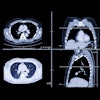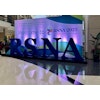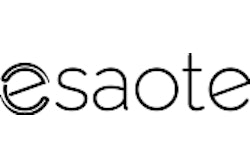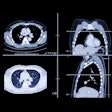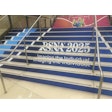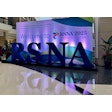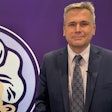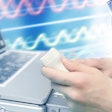The MRI industry has seen better years than 2001. In July the market was rattled by concerns over patient safety when a six-year-old boy in New York was killed by an oxygen cylinder drawn into the magnet bore. The accident prompted many MRI centers to review their safety procedures and adopt new guidelines aimed at keeping ferrous metals out of the imaging suite.
Clinically, MRI was overshadowed by advances in other modalities such as FDG-PET, full-field digital mammography, and multislice CT. Together they've stolen the limelight from MRI, long radiology’s glamour modality.
But there’s little doubt that MRI will soon reclaim its leading role, especially considering the modality's inherent safety advantages: a lack of ionizing radiation, and the ability to use safer noniodinated contrast agents.
Moreover, developments in high-field magnet design continue to yield improvements in temporal and spatial resolution, signal-to-noise ratio, and image consistency. Better software is helping to extract more useful information from image data. MRI-based image guidance systems are becoming more sophisticated.
The resulting new applications -- in cardiac and vascular MRI, brain imaging, breast imaging, extremity imaging, whole-body MRI -- all point to a rosy future for the modality.
Esaote
This Italian medical device vendor will debut C-scan, a new dedicated extremity scanner that features a number of improvements over Artoscan, the company's previous extremity magnet.
Esaote made hardware and software improvements to its technology in developing C-scan, resulting in a system that has image quality 30%-40% better than Artoscan. Thanks to new electronics and new methods of signal measurement during the pre- and post-processing phases, C-scan has image quality comparable to scanners with higher field strengths, the company said.
The scanner uses the same 0.2-tesla magnet found on Artoscan, but in a more compact design. The system's gradients are rated at 10 mT/m with a slew rate of 40 mT/m/msec. It is also capable of storing images directly to CD-ROM in DICOM format.
GE Medical Systems
GE will roll out Signa Infinity, a new 1.5-tesla product line. At Infinity’s core is a CXK4 magnet, which the Waukesha, WI, company claims provides the industry's best homogeneity for consistent image quality. Infinity is based on GE’s LX operating system, already used on other Signa platforms.
Infinity makes possible new clinical applications such as fluoro-triggered MR angiography with less than one second switching, advanced cardiac imaging, and 3-D prostate and brain spectroscopy. The magnet also features GE’s unique TwinSpeed dual-gradient technology, which reduces in-bore gradient noise by up to 40% and supports a zoom mode with a 150 mT/m/msec slew rate for advanced applications in cardiac and neuro imaging.
The system’s open radiofrequency architecture supports a large selection of high signal-to-noise ratio coils, including 4-D phased-array coils for shorter exams, according to the company.
ONI
This North Andover, MA, company will highlight OrthOne, a dedicated high-field extremity scanner. ONI will demonstrate clinical images acquired with systems installed at two beta sites in the U.S. The company expects to have three more of the $475,000 scanners installed by the end of this year.
ONI plans to ramp up full production of OrthOne units in 2002, and plans to sell 60 systems next year. The company will market the scanner to imaging facilities as well as orthopedic practices.
Philips Medical Systems
Look for new enhancements to SENSE (sensitivity encoding), the ultrafast imaging technique developed for the Bothell, WA, vendor’s flagship Intera line of products. Philips is introducing a new line of SENSE coils that quadruple image acquisition speed. SENSE has already been implemented on 150 Intera systems worldwide and is available on the company's new and existing MR systems up to 3 tesla.
Also in the 3-tesla realm, Philips is announcing whole-body-imaging capability as a work in progress for its Intera 3.0 T ultra-high-field system. Superior signal-to-noise ratios in neurological exams can be used to improve the temporal and spatial resolution for routine acquisition of MRI and MRA images, according to the company.
Interventional MRI will also be a focus for the vendor. Philips is highlighting work conducted by researchers at the University of Utrecht in the Netherlands and Philips Research Labs in Hamburg, Germany in developing fiber-optic active MR catheters for the company’s Intera I/T interventional MR system. Philips claims that the catheters solve the safety issue related to potential heating with conventional designs. At the RWTH University of Aachen, interventional cardiology procedures were performed in animals under full MR guidance, including coronary artery stenting and septal defect closure device placement.
Philips will also highlight work conducted at the University of California, San Francisco, where a combination of an Intera I/T with a catheterization lab has made it possible to provide MR functionality during complex clinical interventional procedures, such as intracranial aneurysm treatment and carotid stent delivery.
Finally, look for Philips to provide additional details on the integration of its product line with MRI products formerly manufactured by Marconi Medical Systems of Cleveland. Philips completed its purchase of Marconi in October, and has stated that former Marconi products are now part of the Philips MRI line.
Siemens Medical Solutions
A new 3-tesla scanner -- the second in the company’s product line -- will be highlighted in the Siemens booth. The Iselin, NJ, company is launching Magnetom 3T Trio, a new work-in-progress magnet designed for both brain and whole-body MR exams.
Trio is based on Siemens’ Sonata platform, and in its standard configuration offers a gradient system with a 200 T/m/s slew rate and an RF system with eight independent channels. Trio will complement Magnetom Allegra, another Siemens 3-tesla system, which is designed for dedicated head imaging.
Toshiba America Medical Systems
Enhancements to Toshiba’s Opart and Excelart scanners will be featured in the Tustin, CA, company’s RSNA booth. For the 0.35-tesla Opart open system, Toshiba will roll out version 4.0 of the scanner’s operating software, featuring a new color user interface with new customization options and advanced high-field sequences. The software increases the types of exams that can be performed on the mid-field open system, and clinical applications include whole-body, 3-D, MRA, water-fat separation, and spine procedures.
For the 1.5-tesla Excelart, Toshiba will highlight SPEEDER, a sensitivity-encoding technology that enables dramatic improvements in image acquisition speed, according to the company. The work-in-progress technique will be useful across a broad range of clinical applications, according to the company. SPEEDER is pending FDA 510(k) clearance.
By Brian Casey
AuntMinnie.com staff writer
November 14, 2001
Copyright © 2001 AuntMinnie.com

